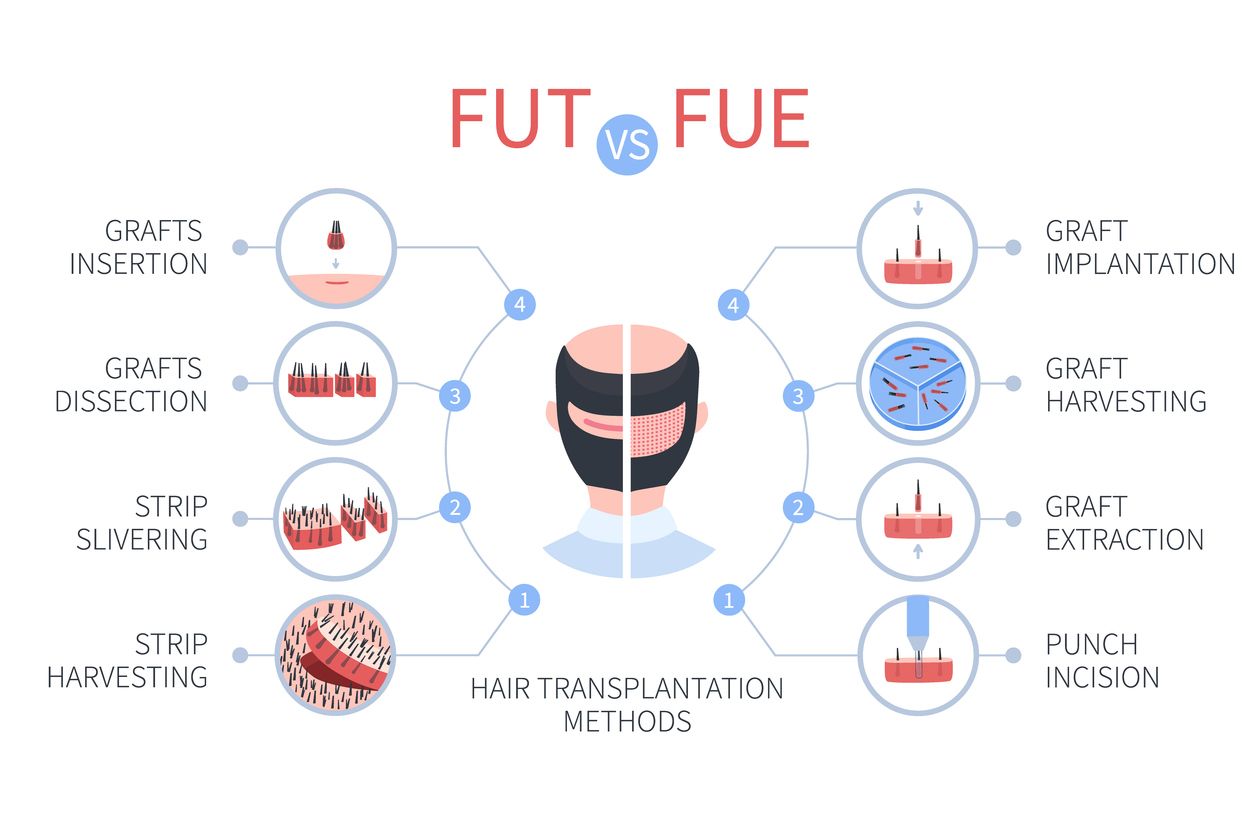There are two tried and true methods for performing hair restoration surgery, the strip excision/FUT (follicular unit transplantation) and FUE (AKA the follicular unit extraction/excision). The differences in these two procedures involves how the donor hair is harvested from the back of the head. In strip excision, a strip of hair is removed from the back of the scalp and the surrounding skin is brought back together by stitches, which get removed approximately two weeks after the procedure. In FUE, individual hairs get harvested using an FUE device. Dr. Ratushny skillfully uses the WAW-FUE device to carefully extract each follicular unit in a manner which minimizes graft transection and helps blend in the extracted hairs with the patient’s remaining hairs. The later steps in both strip and FUE procedures are similar after the removal of the donor hairs. In both procedures, the hairs are transplanted to the front and top of the scalp in similar fashion, using careful hair placement with specialized forceps, with attention paid to the direction and curl of the hairs.
So, what are some of the reasons that a hair transplant surgeon will recommend FUE over the strip excision:
- If you wear your hair cropped, very short, or shaved, an FUE may be a better choice than the strip since the small dot scars of an FUE may be less noticeable than the faint line of the strip excision. However, Dr. Ratushny’s patients who have gotten a strip excision and have a short-cropped haircut have stated that the strip excision scar is usually not visible unless you closely inspect the back of the scalp.
- If you’ve had multiple prior strip excision procedures and there is not enough scalp laxity to do another strip excision, an FUE may be a better choice.
- Under the very rare circumstance of widening of the strip scar, your doctor may consider a follow-up FUE procedure in which some hairs are placed into the strip scar (in addition to the typical recipient sites in the front of the scalp/hairline) to make it more camouflaged among your other hairs.
- You don’t mind shaving the back of the scalp for the surgical procedure itself. The FUE requires shaving of the donor area of the back of the scalp with a shaver without a clipper attachment. Typically, the surrounding hairs grow back out to cover the extracted hairs in about 1 week.
What are the reasons that your hair transplant surgeon will recommend a strip excision (FUT) over an FUE?
- The strip excision hair transplant moves the greatest amount of hairs from the most optimal donor area on the back of the head.
- Female patients almost exclusively get strip excisions. The reason for this is that strip excisions may be done by just shaving the area to be excised in the back of the head without having to shave the whole back of the scalp as one needs to do for an FUE. The excised strip scar can be easily camouflaged by the surrounding hairs immediately after the transplant.
- If male patients don’t want to shave the back of the head for the FUE procedure. The strip excision is more easily camouflaged by the surrounding hair immediately after the procedure. That being said, the FUE extraction sites are usually well camouflaged by the surrounding hairs after about 1 week of regrowth.
- If you have had multiple prior FUE procedures and the back of the hair can’t be thinned out anymore with another FUE procedure. The strip excision involves bringing the skin above and below the strip together with stitches and leaving a faint scar which should be easily camouflaged with surrounding hairs. In having a repeat strip excision procedure, the original strip scar may be removed so you are left with only one strip scar rather than two.


